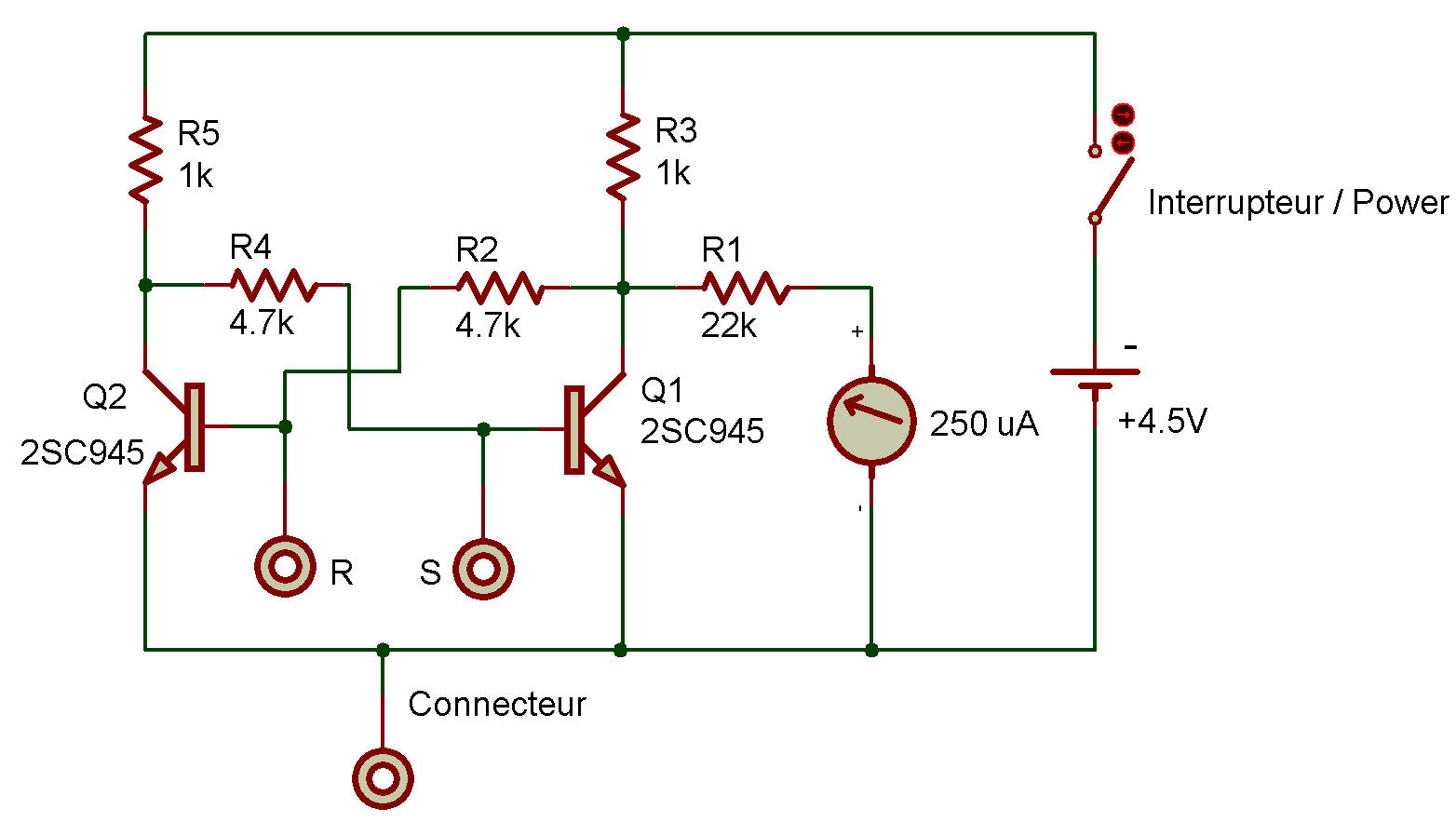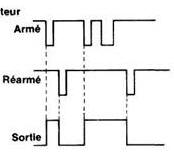

An R-S flip-flop
Électronique /
Electronic


In earlier Projects we've used a "flip-flop" Integrated Circuit the 7476. We asked you back then to guess what a "flip-flop" circuit does—now we're going to find out.
After you wire this Project, turn power ON. Look at the Meter ... is anything happening?
Now touch terminal R with the exposed end of the wire. Is there any change?
Now touch terminal S—what does the Meter do now?
Now touch terminal R and see what happens.
This Project shows how a "flip-flop" circuit gets its name. It has two states: off and on (or 0 and 1) and keeps that state until you change it.
If the circuit is on (or 1), the circuit is said to be set, if the circuit is off (or 0), the circuit is said to be reset. (And that's where we get the R-S pan of this Project's name). A circuit can "memorize" things.
It will always stay off or on (0 or 1) until it's set or reset. This is the same way computers are able to "remember" things.
The 7476 has a part called a "Dual J-K Flip-Flop." What do you think is different about this part and this circuit?
Be sure to make a note about your guess, Oh ... why do we call it a "'flip-flop''?
Because it flips on and flops back off. Sorry about that!
